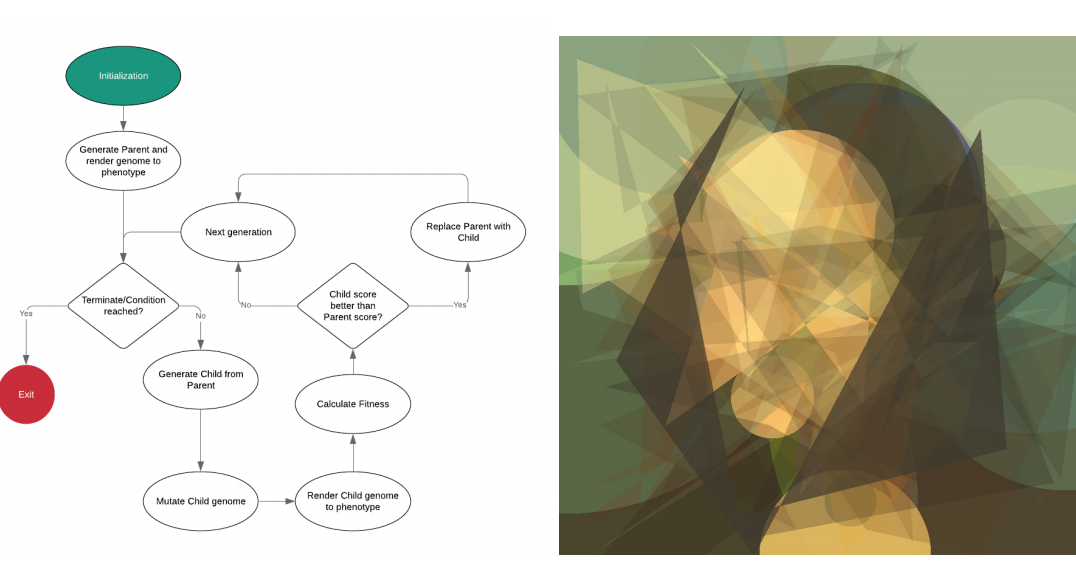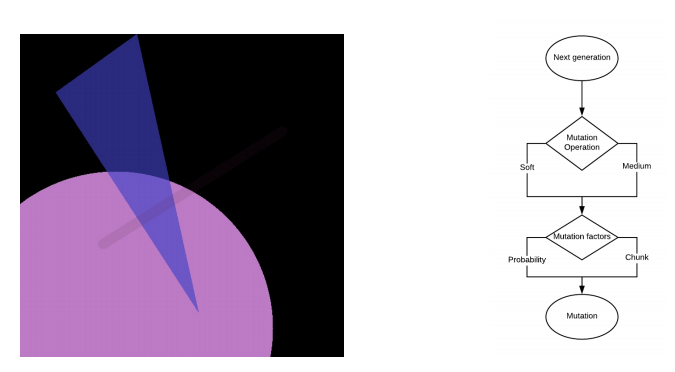
Researchers from the Faculty of Technology, Art, and Design at Oslo Metropolitan University have presented an evolutionary art project where paintings are represented with overlapping geometric shapes.
The proposed algorithm creates a different kind of art by representing images with transparent overlapping geometric shapes like circles, polygons, lines, etc. Researchers tried to approximate the images using only primitive shapes and created a new artistic style.
The algorithm is part of the broader family of Evolutionary or Genetic Algorithms (GA). These algorithms are search (or optimization) algorithms which mimic the process of natural evolution. Candidate solutions are encoded and evolved using an evolutionary algorithm which defines genotype, phenotype, fitness function, and coupling or mutation parameters.
In the proposed evolutionary art method, the genotypes representing features and order of the geometric shapes are evolved. The objective is to approximate the target image or painting by using primitive shapes, so the goal is to find the combination of shapes with their order and features that best approximates that image.
Therefore, the evolution relies on a fitness function that has the corresponding pixels of an input image as a target goal. Each image is represented as a set of shapes each of them containing: type, coordinates, and radius. Each of the shapes is represented by a type, size (width and height), color and transparency (alpha).


Researchers introduced also a mutation that randomly modifies the genes sometimes. The algorithm has three types of mutations: soft (updates parameters within the limit), medium (replaces existing parameters with new values) and hybrid (combines two soft and one average in a 2: 1 ratio).
The algorithm is rendering the images by placing shapes one by one on a black canvas. The researchers conducted experiments using the same Mona Lisa painting. More about the proposed algorithm can be read in the pre-print paper published on arxiv.

This is so cool, I skimmed over the paper but don’t understand it other than the general idea of evolving and fitness and plan to build something in Javascript right… Read more »